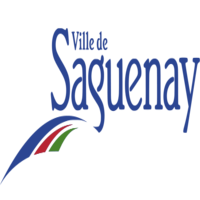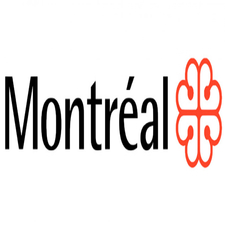Development planning diagram
Type of resources
Topics
Keywords
Contact for the resource
Provided by
Formats
Representation types
Update frequencies
status
-

Major land uses of the Saguenay Land Use and Development Plan**This third party metadata element was translated using an automated translation tool (Amazon Translate).**
-

The land use and development plan puts forward a frame of reference aimed at better knowing, protecting and promoting heritage. The data available in this set mainly comes from the mapping of sections 2.1, 2.3 and 3.1 of the Urban and Urban Plan of Montreal, namely adaptation to climate change, territories of ecological interest, the Green and Blue Grid, the Green and Blue Grid as well as constraints and nuisances. In January 2025, map 15.1 — Wetlands of Interest was added to the Diagram. Resources related to this map are now available: - Wetland of interest to protect or restore - Wetland protection area - Wetland of interest for sustainable use - Coastal wetland or flood zone This urban planning and development plan for the agglomeration of Montreal outlines the main parameters that will guide the Montreal agglomeration council in decisions relating to land use planning in the coming years. From a perspective of sustainable development, this document guides decisions that shape the territory in order to promote compact and greener neighborhoods, increase public and active transportation, support the economic dynamism of the agglomeration and highlight areas of interest. [Consult the interactive map] (https://smvt.maps.arcgis.com/apps/webappviewer/index.html?id=d152aaa85b6f4e9086cecdf10c7456db) of the Planning and Development Plan to visualize the thematic data.**This third party metadata element was translated using an automated translation tool (Amazon Translate).**
-

The land use and development plan puts forward a frame of reference aimed at better knowing, protecting and promoting heritage. The data available in this set mainly comes from the mapping in section 2.3 of the Land Use and Development Plan of the Agglomération de Montréal, i.e. the __built or archaeological heritage__, the __emblematic and identity landscapes__, as well as the __views of interest__. This urban planning and development plan for the agglomeration of Montreal outlines the main parameters that will guide the Montreal agglomeration council in decisions relating to land use planning in the coming years. From a perspective of sustainable development, this document guides decisions that shape the territory in order to promote compact and greener neighborhoods, increase public and active transportation, support the economic dynamism of the agglomeration and highlight areas of interest. Consult the [interactive map] (https://montreal.ca/services/cartes-interactives-amenagement-du-territoire) of the Planning and Development Plan to visualize the thematic data.**This third party metadata element was translated using an automated translation tool (Amazon Translate).**
-

Land use and occupancy density reflect, at the normative level, the main directions of land use planning in the agglomeration of Montreal. The data available in this set mainly comes from the mapping in Chapter 3 of the Land Use Plan and Development Plan for the Agglomération de Montréal, i.e. __land usage__ and __occupancy density__. This urban planning and development plan for the agglomeration of Montreal outlines the main parameters that will guide the Montreal agglomeration council in decisions relating to land use planning in the coming years. From a perspective of sustainable development, this document guides decisions that shape the territory in order to promote compact and greener neighborhoods, increase public and active transportation, support the economic dynamism of the agglomeration and highlight areas of interest. Consult the [interactive map] (https://smvt.maps.arcgis.com/apps/webappviewer/index.html?id=d152aaa85b6f4e9086cecdf10c7456db) of the Planning and Development Plan to visualize the thematic data. **This third party metadata element was translated using an automated translation tool (Amazon Translate).**
-

The consolidation and enhancement of the commercial centers indicated in __map 4 — Concentrations of commercial establishments __, as well as the commercial activity of streets, axes and shopping centers should be preferred. In addition, the economic clusters represented on __map 8 — Economic clusters of the agglomeration of Montreal__ is a particularity of the Montreal region. These clusters total important employment pools and have the potential for growth and wealth creation. The data available in this set come from sections 2.1 and 2.2 of the Land Use and Development Plan of the Agglomération de Montréal. This urban planning and development plan for the agglomeration of Montreal outlines the main parameters that will guide the Montreal agglomeration council in decisions relating to land use planning in the coming years. From a perspective of sustainable development, this document guides decisions that shape the territory in order to promote compact and greener neighborhoods, increase public and active transportation, support the economic dynamism of the agglomeration and highlight areas of interest.**This third party metadata element was translated using an automated translation tool (Amazon Translate).**
-

This data set contains geographic and descriptive information on buildings and sites subject to the Cultural Heritage Act and located on the territory of the City of Montreal. The proposed polygonal boundaries complement the specific information already provided by the Ministry of Culture and Communications: - [Heritage buildings cited by municipalities] (https://www.donneesquebec.ca/recherche/fr/dataset/immeubles-patrimoniaux-cites-par-les-municipalites-et-les-communautes-autochtones) - [Heritage buildings classified by the Minister of Culture and Communications] (https://www.donneesquebec.ca/recherche/fr/dataset/immeubles-patrimoniaux-classes-par-la-ministre-de-la-culture-et-des-communications) - [Heritage sites cited by municipalities] (https://www.donneesquebec.ca/recherche/fr/dataset/sites-patrimoniaux-cites-par-les-municipalites-et-les-communautes-autochtones) - [National heritage site declared by the Cultural Heritage Act by the Government of Quebec] (https://www.donneesquebec.ca/recherche/fr/dataset/site-patrimonial-national-declare-par-la-loi-sur-le-patrimoine-culturel-par-le-gouvernement-du -) - [Heritage sites classified by the Minister of Culture and Communications] (https://www.donneesquebec.ca/recherche/fr/dataset/sites-patrimoniaux-classes-par-la-ministre-de-la-culture-et-des-communications) WARNING: Approximate demarcations were made from property lines or building right-of-way. The data is provided for information purposes only and, therefore, has no legal effect. Refer to the Cultural Heritage Register, maintained at the Ministry of Culture and Communications by the Registrar of Cultural Heritage, for legal information.**This third party metadata element was translated using an automated translation tool (Amazon Translate).**
-

This data set brings together a series of data focused on the topic of transport. These data are found in various sections of the Land Use and Development Plan. The description of each of these games contains the card number to which it refers. This urban planning and development plan for the agglomeration of Montreal outlines the main parameters that will guide the Montreal agglomeration council in decisions relating to land use planning in the coming years. From a perspective of sustainable development, this document guides decisions that shape the territory in order to promote compact and greener neighborhoods, increase public and active transportation, support the economic dynamism of the agglomeration and highlight areas of interest. Consult the [interactive map] (https://smvt.maps.arcgis.com/apps/webappviewer/index.html?id=d152aaa85b6f4e9086cecdf10c7456db) of the Land Use and Development Plan to visualize some of these thematic data.**This third party metadata element was translated using an automated translation tool (Amazon Translate).**
-

__collective equipment__ brings together buildings housing activities that meet the various needs of the population in terms of health, education, culture, sport and tourism. The classification of public facilities according to their metropolitan or agglomeration interests is carried out solely for the purposes of land use planning and does not in any way affect the division of powers established in accordance with applicable laws. The data available in this set come from section 2.1 of the Land Use and Development Plan of the Agglomération de Montréal. They are represented on __maps 34 to 38__, located in Appendix I. Presented in section 2.3 and illustrated on __map 44__, __equipment and infrastructures related to water__ allow the practice of various nautical activities on the large bodies of water surrounding the agglomeration of Montreal. This urban planning and development plan for the agglomeration of Montreal outlines the main parameters that will guide the Montreal agglomeration council in decisions relating to land use planning in the coming years. From a perspective of sustainable development, this document guides decisions that shape the territory in order to promote compact and greener neighborhoods, increase public and active transportation, support the economic dynamism of the agglomeration and highlight areas of interest. NOTE THAT THESE DATA FROM THE LAND USE AND DEVELOPMENT PLAN WERE UP TO DATE AT THE TIME OF ITS ADOPTION ON JANUARY 21, 2015. THE DATA COULD BE CHANGED LATER.**This third party metadata element was translated using an automated translation tool (Amazon Translate).**
 Arctic SDI catalogue
Arctic SDI catalogue